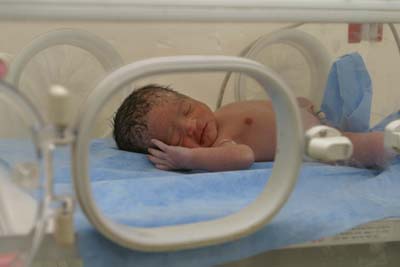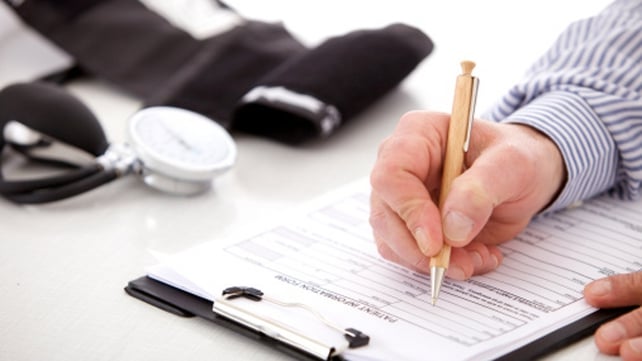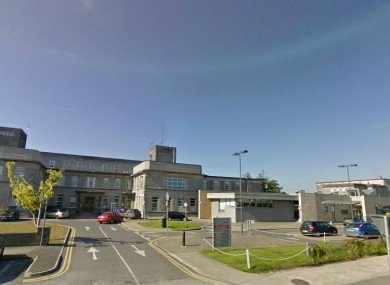As many as 105 people a day do not turn up for their appointments at Galway & Roscommon hospitals
The HSE estimates that it cost more than €3 million to prepare for appointments for people who never showed up.
More than 38,000 people did not show up for appointments at the Galway and Roscommon Hospital Group last year, the HSE has revealed.
An estimated €3,067,280 was wasted in lost time preparing for people who never turned up – which works out at 105 people every day – and the current waiting list could have been massively shortened if the hospitals had been told in advance, the head of the hospital group said today.
Tony Canavan, the Chief Operating Officer, said it is a “significant problem” for the hospitals in the group.
“In total, 38,341 patients did not go to their appointments or tell us in advance; when you consider that our current waiting lists stands at 36,067, this means that we could have shortened our waiting list and reduced the waiting time for other patients,” he said.
Canavan said that the hospitals are trying to “radically reduce the length of time that patients wait for an outpatient appointment.”
The hospital group has urged patients to get in touch if they were unable to attend so that the appointment can be rescheduled and the time can be offered to another patient. A dedicated call centre has been set up for outpatient appointments.
The Galway and Roscommon Hospital Group covers Galway University Hospital, Merlin Park Hospital, Portiuncula Hospital, Ballinasloe and Roscommon General Hospital.
Staffing crisis the cause of Suicidal man not getting access to Roscommon psychiatric hospital unit
The unit of Roscommon Psychiatric County Hospital was shut at the weekend because of staff shortages.
It was revealed that the Acute Psychiatric Services Unit at Roscommon County Hospital was closed to admissions last weekend because of a staffing crisis, leading to one ‘suicidal’ man being turned away.
The Psychiatric Nurses Association told TheJournal.iethat the incident occurred after a decision was taken on Friday to suspend all admissions.
“People were taken in taxis to Galway, where they were subsequently sent home,” PNA National Secretary, Noel Giblin, explained. “University Hospital Galway had to keep beds for emergencies so the situation created a bottleneck there and added to the problem.”
Giblin said the action taken at the weekend was further indication that the services in the area are “in freefall”.
“You cannot lose over 50 professional nursing staff from a vital service as has happened in Roscommon Psychiatric Services without it having a serious impact on those services,” he continued.
There is growing concern for the safety of patients and staff in the services to breaking point.
Staff nursing levels have dropped from 111 in 2009 to 58 this year. Despite three short-term contracts being handed out by the HSE and an attempt to hire agency staff, the crisis was not averted last weekend.
The patient, who described himself as suicidal to Ciara McCaughley in the Roscommon Herald, was discharged from the Galway hospital on Saturday. He said he had seen spare beds in the unit but knew there wasn’t “enough staff”.
Public worry: Concerns for the nurses working in the unit have been voiced following a number of assaults in recent weeks.
A public meeting last week heard from one staff member who said she was “ashamed” to work in the service.
“Our nurses our stressed,” said Giblin. “They are working in very difficult situations but they are still doing their best. They are the best staff in the country. They are pleading with management to intervene.
It is not safe. Patients are not getting service. Staff are reporting very clearly that they do not feel safe. People have been demoralised and it is very worrying.
The death of a mother-of-two, reported by this website last week, also sparked anger locally. According to the PNA, community services are undeveloped and inadequate as community staff have been redeployed to fill gaps in the Acute Unit. Currently, there are just four community psychiatric nurses for the entire county.
There is also no suicide prevention team and just one addiction counsellor.
Calls have been made for extra staff to be recruited immediately. “We are calling on Minister Lynch to demand that action is taken to ensure that the people in Roscommon have access to properly staffed and resourced psychiatric services that they can have confidence in,” concluded Giblin.
A beautiful day with the Obamas in Dalkey date with Bono
US first lady and her children have pub lunch with the U2 star
First Lady of the United States Michelle Obama ended her two-day trip to the Republic with a lunch in Dalkey with Bono.
She left Finnegan’s pub with her daughters Malia and Sasha just before 3pm, waving to the crowd as she went. Chef Paul Finnegan said they were “lovely, friendly people”. He said all three requested fish and chips while Mrs Obama chose the lobster starter.
Bono and his wife Ali Hewson were briefly caught in a crush as they left the pub afterwards. Bono said he and the Obamas had discussed everything and nothing over lunch and had talked about their families.
Mrs Obama will be reunited with US President Barack Obama in Belfast this afternoon and the family will then travel to Berlin.
 The First Lady arrived in Dalkey at 1.20pm to dine at Finnegan’s pub after visiting Glendalough.
The First Lady arrived in Dalkey at 1.20pm to dine at Finnegan’s pub after visiting Glendalough.
The pub was closed since early morning but it was thought that about 60 local people were inside before the first family arrived.
Bono and his wife arrived just before 1pm, accompanied by two children.
A large crowd gathered outside and whooped as the fleet of black armoured cars arrived.
The lucky few got a quick glimpse of Mrs Obama as she left the car and took a few steps into the pub. She was wearing sunglasses but didn’t turn to wave, much to the disappointment of four girls from the local Loreto Primary School who were waiting to present her and her daughters with little posies.
The lunch menu includes smoked bacon and cabbage, cottage pie and chicken and ham stuffed with mozzarella.
The Paddy Power bookmakers shop changed its sign to O’Bama Power in anticipation of the visit and a large poster of US president Barack Obama adorned the window of the health food store.
All outdoor bins were covered and there was already a strong Garda presence in the village.
Finnegans pub flew an American flag but its doors were closed before the arrival of the US First Family.
The Dalkey pub has enjoyed its share of famous visitors in the past. They include Salman Rushdie, Mel Gibson and Penelope Cruz. Maeve Binchy, who lived nearby, came in for lunch several times a week, to the same reserved table in an alcove, with her husband Gordon Snell.
The First Family was earlier given a private guided tour of the Wicklow Mountains National Park as their whistlestop tour of Ireland draws to a close.
The sun beamed down on the hills above the twin lakes at Glendalough as Ms Obama and Malia and Sasha walked through the famous monastic site. The girls were given a lesson on the ancient ruins by local tour guide George McClafferty. The valley, in the heart of the Wicklow mountains, offers some of the most popular rural landscapes in Ireland and is a well-worn tourist path for visitors to the east coast.
A huge security operation remains in place in Dublin for the 24-hour visit with parts of St Stephen’s Green and Kildare Street closed to through traffic.
Mrs Obama and her daughters had dinner last night in Matt the Thresher’s in Dublin.
This afternoon, they will head north to meet US president Barack Obama, who is at the G8 summit in Co Fermangh, before travelling on to Germany for the latest leg of his European meetings.
Mothers moderate drinking does not harm fetal development 'New study shows'
Moderate alcohol consumption during pregnancy did not appear to harm fetal neuro-development as measured by balance testing at age 10, a new study showed.
Most mothers in the study (95.5%) reported consuming no alcohol to moderate levels of alcohol (3 to 7 drinks per week) during pregnancy, according to John Macleod, PhD, and colleagues from the University of Bristol in England. Higher total alcohol consumption was generally associated with better offspring outcomes on specific measures of balance, including heel-to-toe balance on a beam with eyes open; the odds ratio (OR) for moderate alcohol exposure at 18 weeks compared with no alcohol exposure was 1.23 (95% CI 1.01-1.49).
The study is not the first to suggest that moderate prenatal alcohol exposure may have a positive impact on childhood balance, the authors wrote online in BMJ Open. But the researchers noted that moderate drinkers also tended to be more affluent and better educated, and they attributed the perceived beneficial effects of alcohol consumption to these unrelated factors.
“Taken together, these results do not provide strong evidence of a specific effect (either adverse or beneficial) on maternal alcohol use during pregnancy,” they wrote. ”The beneficial effects apparent in several analyses, although theoretically plausible, were likely to have been the product of residual confounding.”
The study included close to 7,000 children who were part of a birth cohort born to residents of the former Avon region of England between April 1991 and December 1992.
All children included in the analysis participated in a 20-minute balance assessment test at age 10 that included measurements of dynamic balance (walking on a beam) and static balance (heel-to-toe balance on a beam, standing on one leg for 20 seconds) with eyes open and with eyes closed. Each child had two attempts at each test.
Alcohol consumption among mothers was measured through self-reported questionnaires administered at 18 weeks’ gestation and again at 47 months after giving birth. Fathers were also asked about their drinking habits during these time points.
An alcoholic “drink” was defined as a single pub measure of spirits (25 ml), a half-pint of lager or cider, or a glass of wine. Binge drinking was defined as drinking four or more drinks in one day.
A total of 70% of mothers reported drinking no alcohol during pregnancy, while one in four reported drinking between one and two (low consumption) and three and seven (moderate consumption) alcoholic drinks a week. The rest of the mothers (4.5%) acknowledged drinking more than seven alcoholic beverages a week during pregnancy, and one in seven of these women were classified as binge drinkers.
Four years after giving birth, just over 28% of the women reported that they were nondrinkers, and more than half reported drinking more than three drinks per week.
Higher maternal alcohol use during pregnancy — excluding binge drinking — was generally associated with better offspring balance outcomes.
In addition to better performance on the static-balance-eyes-open test, children born to women who reported moderate drinking during pregnancy tested better than children of nondrinkers on the test measuring static balance with eyes closed (OR 1.25, 95% CI 1.06-1.48).
Higher total alcohol consumption before and after pregnancy by mothers, and higher consumption by fathers during pregnancy were associated with better balance outcomes in children, especially static balance.
Mendelian randomization was used to estimate the association between maternal genotype and offspring balance using the nonsynonymous variant rs1229984*A (ADH1B) as a proxy for lower maternal alcohol consumption.
The assumption was that if drinking alcohol truly conveyed a benefit in terms of offspring balance, children born to mothers with the “low alcohol” gene would be expected to have poorer balance than children born to mothers without the gene. But this is not what the study showed.
All balance outcomes were better among offspring of mothers carrying the ADH1B genotype predisposed to lower alcohol consumption, but the difference was small.
Study limitations included self reported parental alcohol consumption, low test-retest reliability of balance measures which may have led to misclassification of 10-year-old subjects, and a sample size that may have been too small to adequately power the genetic analysis.
But despite these limitations, the researchers concluded that their findings do not suggest a true beneficial effect for alcohol consumption on a key neurodevelopmental measure – childhood balance.
“Given the overall pattern of associations found, in particular the lack of any consistent association between binge drinking and better balance and the results of the Mendelian randomization approach, we think a causal explanation for this finding is unlikely and suggest that it was probably due to chance,” they wrote.
Obese women at Premature birth risk
‘A new study finds’


PREGNANT WOMEN WHO ARE OVERWEIGHT OR OBESE ARE AT AN INCREASED RISK OF DELIVERING THEIR BABIES TOO EARLY, A STUDY HAS SHOWN.
US and Swedish scientists used information from 1.5 million births that occurred between 1992 and 2010. The women’s body mass index (BMI) was determined at their first prenatal appointment. A BMI of 18.5 to 24.9 is classed as normal, 25 to 29.9 is classed as overweight and 30 or more is considered obese.
The study found that compared to normal weight women, those who were overweight had a 25% increased risk of giving birth extremely prematurely – that is more than 12 weeks before their due date.
Those with mild obesity (BMI of 30-34.9) had a 60% increased risk.
The bigger a woman was, the greater the risk. Those with extreme obesity (BMI of 40 or more) had triple the risk of giving birth extremely prematurely.
Overweight and obese women were also more likely to give birth very prematurely (eight to 12 weeks early) and moderately prematurely (four to eight weeks early).
In many cases, the babies had to be delivered early due to obesity-related pregnancy complications, such as pre-eclampsia (dangerously high blood pressure).
In relation to spontaneous labour, most of these cases related to extreme prematurity. According to the scientists, maternal obesity is linked to an increased production of inflammatory proteins and this increased inflammation may make obese women more susceptible to infections. This in turn may increase the risk of spontaneous extremely premature deliveries.
“For the individual woman who is overweight or obese, the risk of an extremely preterm delivery is still small. However, these finding are important from a population perspective. Preterm infants and, above all, extremely preterm infants account for a substantial fraction of infant mortality and morbidity in high income countries,” explained lead scientist, Dr Sven Cnattingius, of the Karolinska Institutet in Sweden.
China has the world’s fastest and biggest supercomputer
THE TIANHE-2 IS NO TABLET OR LAPTOP. NOT ONLY IS IT BIG, BUT THE CHINESE SUPERCOMPUTER IS REALLY FAST.
China has built the world’s fastest supercomputer, almost twice as fast as the second-place U.S. computer, a step that underlines the country’s rise as a science and technology powerhouse.
The twice-a-year TOP500 official listing of the world’s fastest supercomputers says the Tianhe-2 (sounds like tee-awn-hoo-wa) is by far the fastest. It is capable of computing at 33.86 petaflops per second. That equals 33,860 trillion calculations per second.
The Tianhe-2 — the name means “Milky Way-2” — was developed by the National University of Defense Technology in central China’s Changsha city. It knocks the U.S. Department of Energy’s Titan machine off the No. 1 spot. The Titan achieved 17.59 petaflops per second.
Supercomputers are used for complicated work, such as predicting the weather, testing military equipment and designing jetliners.










No comments:
Post a Comment